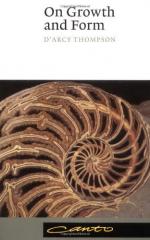|
This section contains 889 words (approx. 3 pages at 400 words per page) |

|
Introduction
The character of life in 1914, while outwardly chaotic, was driven by what Dr. Alan Axelrod, author of The Complete Idiot's Guide to 20th Century History, termed an "inner order, a logic all its own, a myriad of secret alliances that linked the fate of one nation to that of another." It was a world on the verge of explosion.
Noise and Art
Igor Stravinsky's work was an expression of chaos out of logic. Stravinsky was a budding young Russian composer who created scores for the radical ballet The Rite of Spring
in 1913. The music had a violent, sexual quality and was quite primitive in feeling. The rhythms were intensely erratic, the music discordant. The work was a mirror of a man working from a primitive urge to create a modern, highly complex work in a way that no one had quite experienced. It was a deeper expression...|
This section contains 889 words (approx. 3 pages at 400 words per page) |

|




